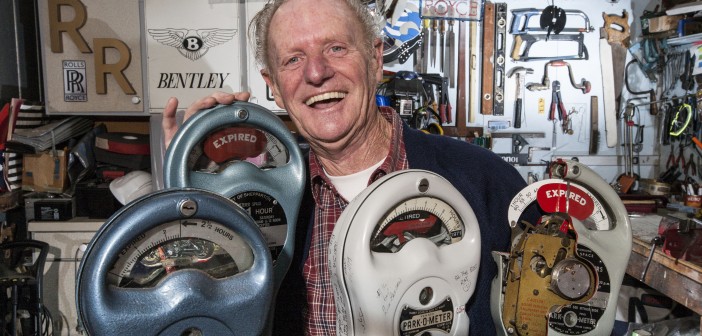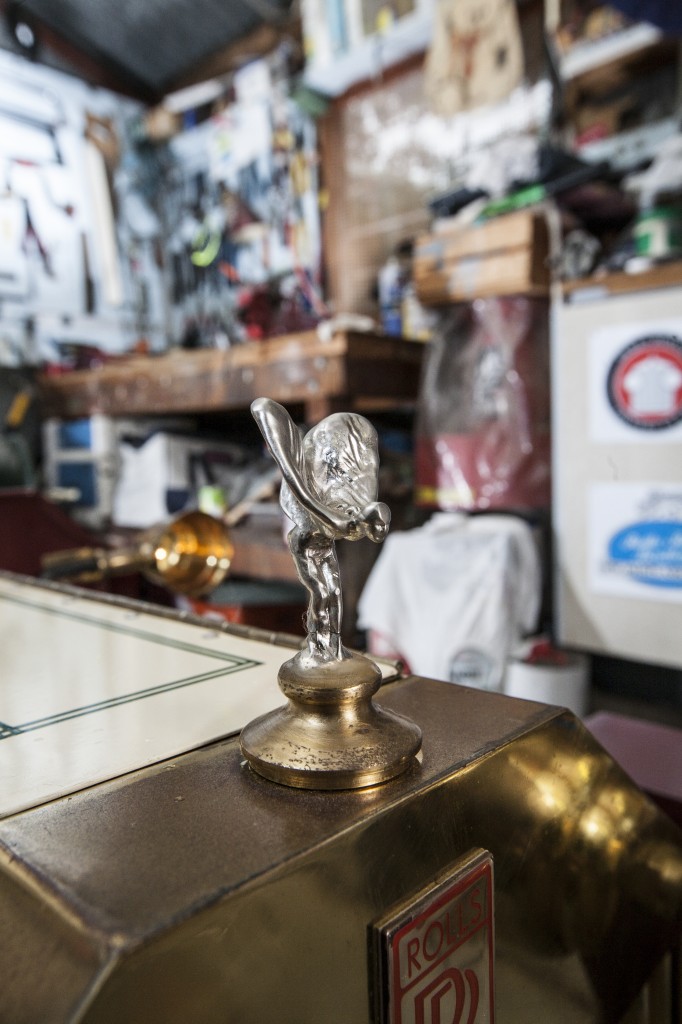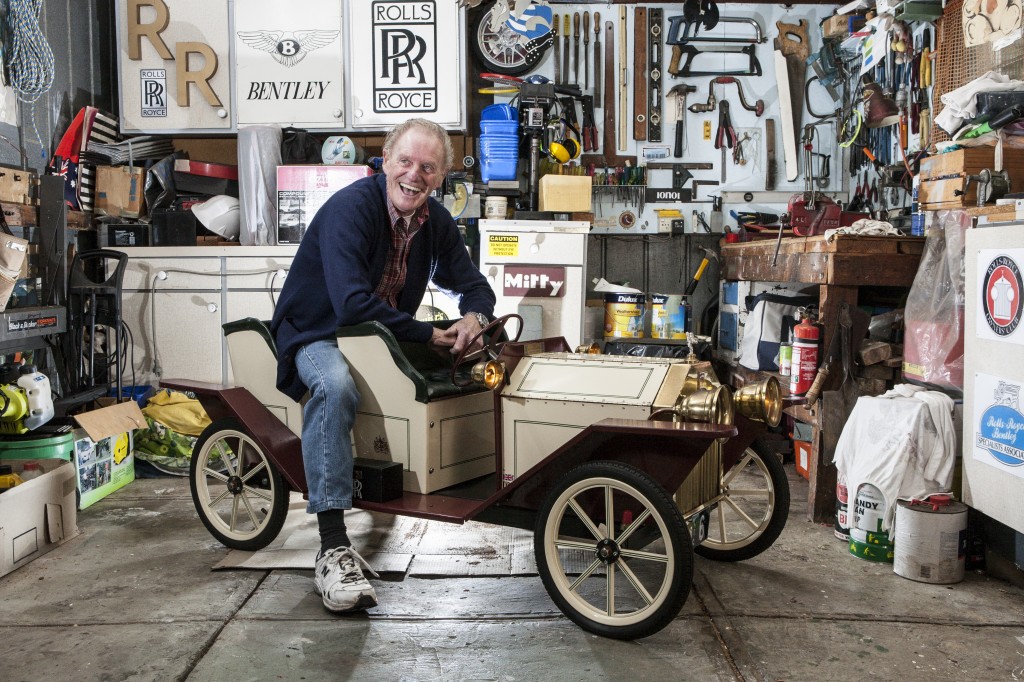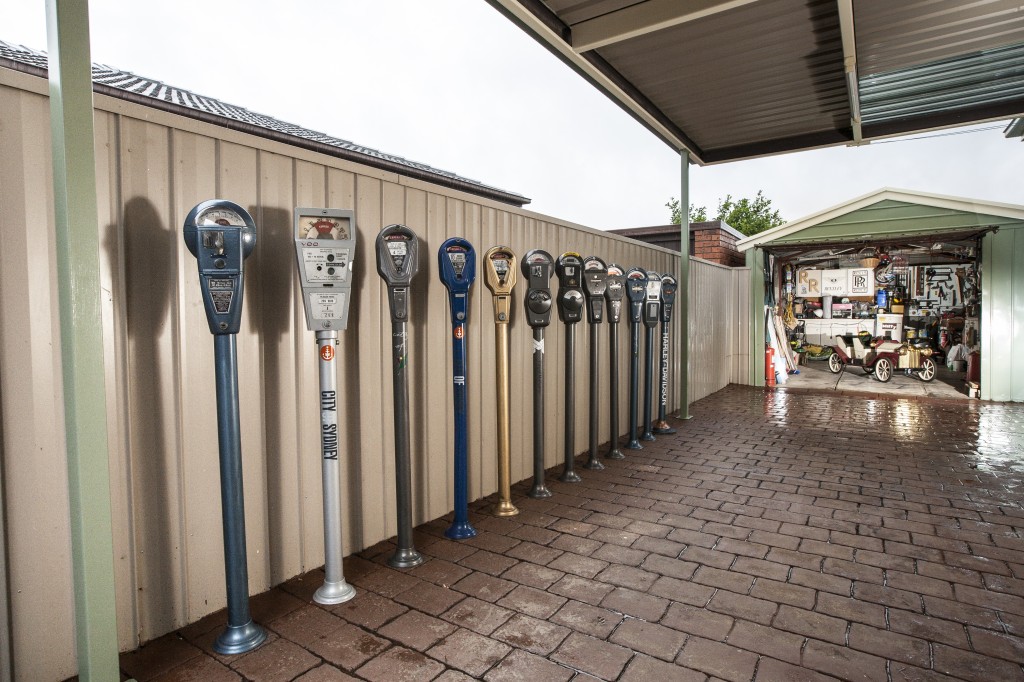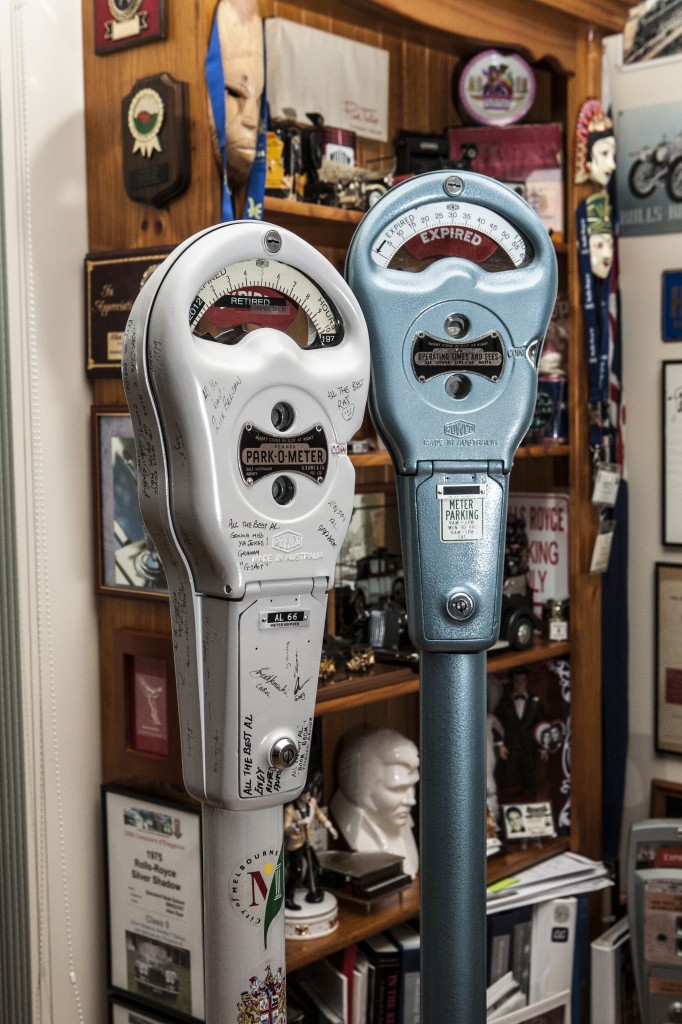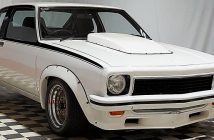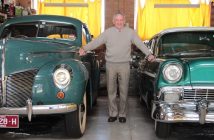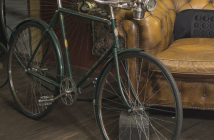From the street, Alan Dyer’s house looks like many others in the neighbourhood. It’s a single level, brick construction and – in keeping with the era of its northern Melbourne suburb – impeccably neat with an almost manicured lawn. Except… there is a Rolls Royce in the driveway – that’s how I know I’m at the right place.
It’s not a brand new example of the famous marque, nor is it a rare veteran model; but it is immaculately pristine. And as I would find out, it also says a lot about the owner.
When you walk into Alan’s house, the first thing you see is a beautiful, antique and noticeably tiny wedding dress on display in the corner. It was his mother-in-law’s. A turn down the hall and you’re in a living area where you are greeted by striking wall-mounted display cabinets, full of Matchbox cars – perfectly lit so the glass doors and mirror backs offer up a lovely glint. Then your eyes are drawn to the collection of Rolls Royce memorabilia on the walls … and in the corners … actually, there’s Rolls Royce everywhere. But, you soon notice a few Elvis pieces in the middle of everything – and the most remarkable illuminated Bakelite clock featuring a rocking ship. And there are parking meters dotted around the place. The walls have sketches and photos in frames; cabinets and level surfaces have trophies and collectables and, like a magnificent centrepiece, there appears to be a scale model Rolls Royce, large enough to carry a child.
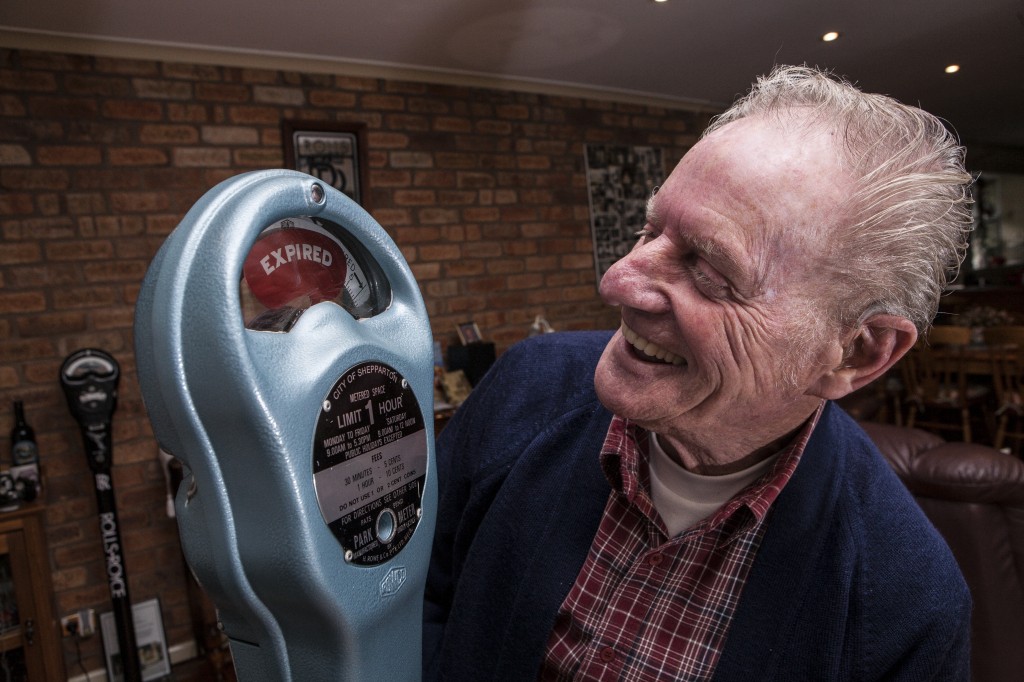
It’s not messy, but nearly every available space is used. It definitely feels like a home, not some weird bric-a-brac shop, but you could spend hours looking through it all.
I struggle for the connection between everything, so I decide to ask Alan outright.
“Gee… I’d say… anything really,” he replies dryly.
That’s not a lot of help, Alan.
“OK… I’m a bit of a bowerbird,” he says chuckling. “I like to keep things and, if I can, I like to display them.”
Now we might be getting somewhere.
Alan starts to show me individual pieces and two things become apparent – his memory and knowledge base is almost encyclopaedic, and he has the most wonderfully charismatic personality. He can tell you exactly what each and every piece is, where it came from, its history and some related fact about it – but it never feels like a lecture. It crosses my mind that a teacher or two could do with taking a page out of Alan’s book, but I don’t think this is a skill you can teach anyone.
Of all the items in Alan’s house, the two most obvious themes are Rolls Royce and parking meters. The former is a childhood fascination he has carried through life, the latter took up much of his employment history.
“I first got into a Rolls Royce when I was 15 – I even got to have a drive,” he says. “I couldn’t even tell you the model, but I fell in love. I thought it was the most amazing car and I was hooked.
“I would take photos of Rolls Royce cars whenever I saw them and draw sketches and put them in a large Collingwood Tech exercise book. It was a great way to learn about them, but sadly I don’t have that book anymore; I think it ended up in the tip when we moved from Carlton to Broadmeadows.”
The book may have disappeared, but the knowledge is firmly locked away. Alan volunteers at Lindsay Fox’s car museum, sharing his extensive knowledge with visitors.
“It’s a wonderful collection,” he says. “If you’re ever in Melbourne, you should make sure you head to Docklands because it’s well worth a look.”
There’s an obvious passion in Alan’s voice and he clearly loves sharing his knowledge.
I spot a statue of the Spirit of Ecstasy on a set of shelves – the famous Rolls Royce radiator mascot that has graced the front of every model to leave the factory since 1912 – and Alan picks it up to point out the fine detail of this automotive icon.
As he is showing me, he starts to tell me about the man who created the original sculpture, Charles Sykes, and the lady it is modelled on, Eleanor Thornton. The names sound familiar – like I’ve heard it in a pub trivia before. But then Alan goes on to explain when Eleanor was born and the fact that she was the secretary to legendary motoring writer John Montagu; when Eleanor died, how she died, the different sizes the statues have been on various models, the materials Rolls Royce has used to make them, how they have been mounted… he is indeed a walking encyclopaedia.
Not surprisingly, a large number of the Matchbox cars in the display cabinets are Rolls Royce – though not all. There are even some rare collectibles such as desk ornaments and plates from when Matchbox had a giftware selection. I’ll declare my naivety and say I didn’t even know Matchbox made such things.
Once again, you can take any model car or truck from the display cabinet and Alan can tell you when it was made, the size of the motor of the real version, and countless other statistics.
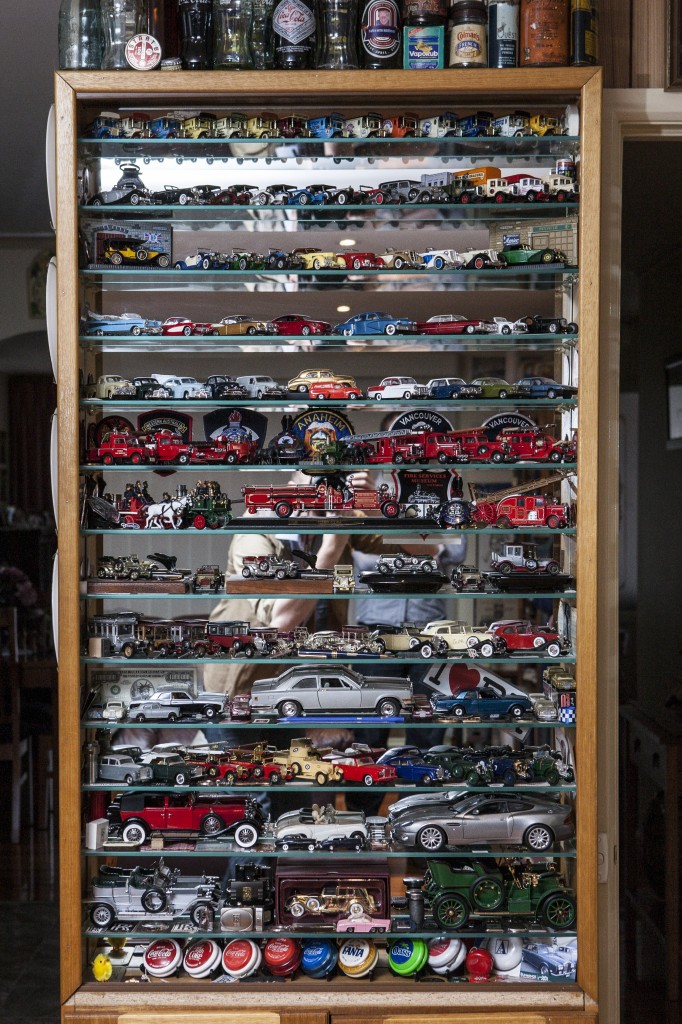
“I started with fire engines, then trucks and then obviously Rolls Royce. But then I got a real one so I stopped collecting the models.”
“I had a few Matchbox cars about 20 years ago, but didn’t really start collecting them ‘till maybe the last 10 or so,” says Alan.
“I’ve stopped because I’ve run out of space. I approached it by groups that I like – I started with fire engines, then trucks and then obviously Rolls Royce. But then I got a real one so I stopped collecting the models,” he adds with a magnificent smile.
That ‘real one’, as he calls it, is usually tucked in the garage, though Alan moved it out into the driveway so we could see some of his other collectables.
The car is immaculate and Alan is rightfully proud to own it. He’s won two state concourses with it and admits to getting in trouble with his wife occasionally for spending a little too long fussing over it.
“I have come inside once or twice to find my dinner gone,” he says with a grin. “It’s normally followed by a sentence like, ‘I called you three times – you don’t even put that much effort into cleaning your teeth.’ What’s more … she’s right.”
This pride and joy is not some luxury – it’s a reward and justification for many years of hard work.
From those days when Alan first fell in love with the make, he had dreamt of owning a Rolls Royce. The opportunity finally presenting itself only 15 years ago, with some diligent restoration work to get it to where it is now.
“God’s own car was an FJ Holden, but if you can’t get an FJ, it better be a Roller!” he says.
“It was a very special day when I got this one and I love spending time on it. It’s done 388,000km… I think it’s just starting to run in now,” he says with a wink.
It is a perfect lead in to a conversation about the scale model back in the house – a working replica of the most famous Rolls Royce of all time, a 1907 Silver Ghost. It’s a solid piece of work and it doesn’t surprise me when Alan says he made it himself.
It has working lights, a horn, the seats are made with the same leather that a real Rolls Royce uses, and two wheelchair motors are ready to be installed so it can truly run. The metal is hand pressed, although Alan admits to using old trophies for the headlights.
“I’m a metal spinner by trade, starting an apprenticeship in 1962 with Renown Plate Company, so I’ve worked with metal my whole life,” he explains.
“This was just a home project for fun. I made it in two goes because work got in the way there for a while, so I can’t really tell you how long it took. Once I had some free time, it didn’t take me very long to finish it.”
Clearly those skills from the apprenticeship are still with him, though in an interesting twist, Alan actually spent a lot of his life working with parking meters.
“Back in the early 1970s I happened to see a mate of mine walking in the street and we got talking. He told me that he fixed parking meters – and I thought, ‘what a great job; walking around in summer with all the pretty girls about’ and then he told me they were looking for someone, so he organised an interview for me. And obviously I got it and started working for the Melbourne City Council in 1971.
“That was a good place to work. My boss was a real top bloke – he made time for you and was very fair. If you got a smack you knew you deserved it!”
After 14 years service, Alan moved to the South Melbourne Council and then took a job with the agent that imported the machines.
“I got to travel around the country showing the different councils how to convert to parking meters, which was an excellent experience. But then I was asked to go back to Melbourne Council which was good as I could spend more time at home.”
In total, Alan spent just over 40 years working with parking meters, the vast majority with Melbourne Council. It is a job he clearly enjoyed, as much as anything for the people he worked with. Upon retirement he was presented with a meter signed by all the guys from the workshop. He also has a special meter where the ‘expired’ flag has been replaced with the word, ‘retired’.
It shows admiration for a worker who was clearly respected and well-loved by his colleagues – in fact; it spreads far wider than that. Alan has a number of meters inside and outside the house. They have all been given to him by various people and, in a number of cases, different councils were good enough to send him new plates when he wanted to restore them.
As a nice touch, he has bolted a row of them alongside his driveway; it’s an excellent way to get money out of your family if you ask me…
Again, Alan can talk you through the history of each individual one: ‘This one’s from America … this one was used in Sydney … this one was manufactured in 1960… it’s not actually a ‘parking meter’ like people think – the registered name is actually ‘Park O Meter’, hence the reason the old machines have POM written on them…’ and so on.
There is an infectious nature in the way he talks – you actually want to know more about parking meters. That’s perhaps a sentence I thought I would never write.
In the presence of someone who would know – I needed to ask the question: was it actually possible to get free parking with a washer or cable tie like some friends would claim back in the day?
“Oh yeah – absolutely,” says Alan. “Some of them worked from width pressure, others were based on the diameter of the coin, so if you knew what you were looking for you could definitely do it. But equally, the most common maintenance we had to do was when someone jammed something in there that they shouldn’t have. Matchsticks were common, broken cable ties – although the most bizarre was when someone would call you because their key ended up getting stuck in there and they couldn’t go home because it was their front door key. You’d laugh about those when you got back to the workshop.”
Although Alan is officially retired, he has been called out once or twice to share his knowledge on the old models.
“There are still some manual meters out there, but they are moving to electronic more and more. As much as anything, they are generally installing multi-bay units where six spaces are serviced by one machine, so the need is just not there anymore.”
So, if a collector’s work is never done, what is next and, more importantly, where will it go?
“I don’t know that I need to add much more,” he says. “I mean, I’ve actually got most of this only in the last 20 years; it’s not like I’ve been collecting my whole life. I haven’t gotten sick of it yet.
“I actually look at it the other way: that at some point I’ll have to de-clutter and will eventually move these things on. But I want to make sure they go to the right place – my Elvis stuff needs to go to a true Elvis fan, the Rolls Royce bits and pieces to the Rolls Royce people. But until then, I’ll just enjoy having it around.”
At that exact point I see the beauty of Alan’s collection. A lot are gifts; bits and pieces that people have given him for his dedication to work or his knowledge in a particular field, or just because they knew he would love it. He has worked hard, made sacrifices and lived a full life, and these items have largely come to him from the respect of other people. They are rewards for how he has handled himself in work, and the brilliant enthusiastic character he brings to any situation. Hopefully they remind him of good times in return.
There is plenty of time on the meter but Alan Dyer has clearly left his mark on the world in the best possible way.

